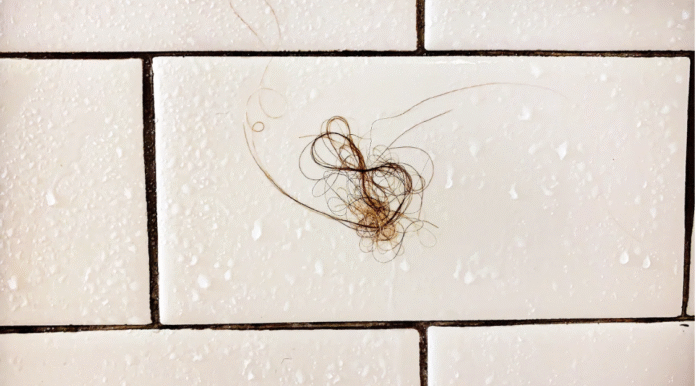Finding clumps of hair in the shower drain can feel alarming, but before you panic, it’s important to know that some hair loss during showers is completely normal. Many people wonder, “why does my hair fall out in the shower?” — and the truth is, most of the time it’s just part of your natural hair growth cycle.
In this article, we’ll break down the stages of hair growth, common causes of shower hair loss, prevention tips, and when it’s time to see a doctor.
Stages of Hair Growth
Hair shedding is part of a natural cycle. A healthy scalp usually has:
-
Anagen phase (85–90%): Active growth stage.
-
Catagen phase (about 10%): Transition stage where hair stops growing.
-
Telogen phase (5–10%): Resting stage when hair naturally falls out.
On average, most people shed around 100 hairs per day, especially during shampooing, brushing, or showering.
Why Does Hair Fall Out in the Shower?
If you’ve noticed more hair in your shower drain lately, a few factors could be at play:
-
Shampooing & conditioning: Massaging your scalp helps loosen hairs already in the shedding phase.
-
Time between washes: If you haven’t washed your hair for a few days, you may see more strands fall out at once.
-
Brushing habits: Like showering, brushing also dislodges hairs that were ready to fall out.
-
Hair thickness: People with thicker hair often notice more strands simply because they have more hair overall.
Common Causes of Excessive Hair Loss in the Shower
While some shedding is natural, certain triggers can make it worse:
-
Stress (physical or emotional): Known to trigger telogen effluvium, a condition where more hairs enter the shedding phase.
-
Dietary deficiencies: Low levels of vitamins like A, D, zinc, and iron can weaken hair growth.
-
Hormonal changes: Pregnancy, menopause, or thyroid problems may cause increased shedding.
-
Hairstyling damage: Heat styling, harsh products, and tight hairstyles can cause breakage.
-
Medical conditions: Issues like alopecia areata can cause patchy hair loss.
When to See a Doctor
It may be time to consult a professional if:
-
You notice sudden or excessive hair loss.
-
Bald patches or thinning areas appear.
-
Shedding can’t be linked to stress, diet, or lifestyle factors.
A dermatologist can help diagnose the root cause and recommend treatment.
How to Prevent Hair Loss in the Shower
While you can’t completely stop natural shedding, you can reduce hair loss with these simple habits:
-
Manage stress: Try meditation, regular exercise, or better sleep routines.
-
Eat a balanced diet: Include fruits, veggies, and protein-rich foods for stronger hair.
-
Be gentle with your hair: Use mild shampoos, let your hair air-dry, and avoid very tight hairstyles.
-
Limit heat styling & chemicals: Reduce the use of straighteners, curlers, and harsh dyes.
-
Stay hydrated: Healthy hair needs a healthy body — water plays a big role.
Takeaway
So, why does my hair fall out in the shower? Most often, it’s just your body’s natural shedding process and not a reason to panic. However, if you notice unusual thinning, bald patches, or excessive shedding, it’s best to consult a doctor.
Healthy habits, stress management, and gentle hair care can go a long way in keeping your hair strong, shiny, and full.

